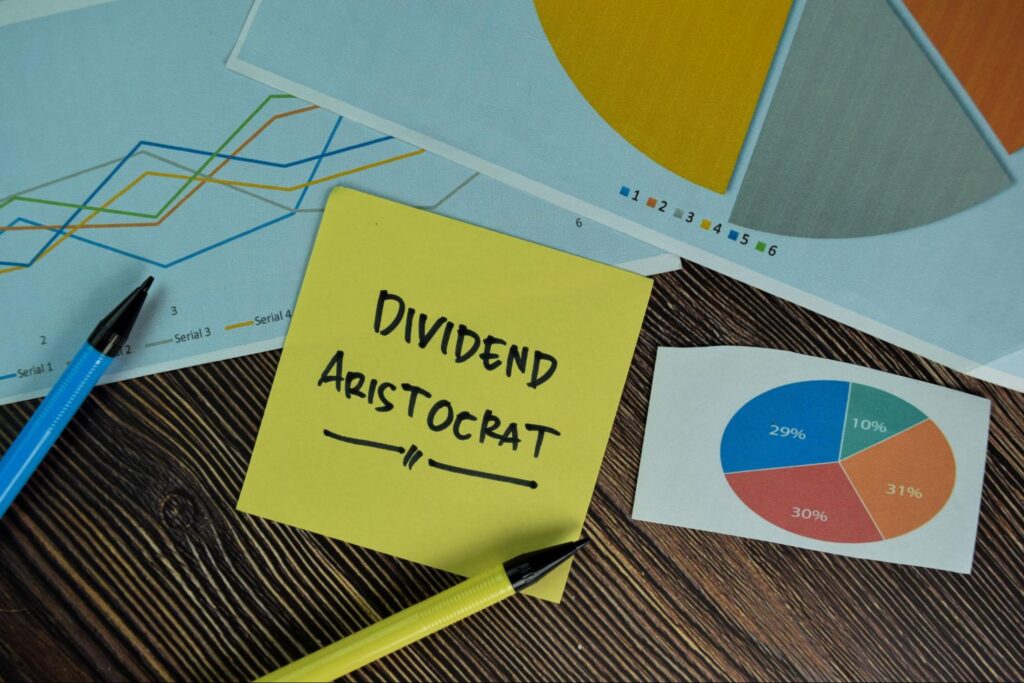
It’s hard to imagine a peaceful and happy retirement without a stable income. Sadly, bank deposits and bonds — the two conservative investments with the most predictable cash flows — can now barely cover inflation due to ultra-low interest rates across the world.
This leaves dividend stocks as the primary income-generating financial asset for retirement portfolios.
Yet selecting dividend stocks for retirement is nothing like the stock market trading seen in movies or encouraged by channels like CNBC. If the goal is to have a retirement income, you should not try to speculate on the stock price.
Instead, the future retiree’s goal should be to find stable companies with solid cash flows and the balance sheet strength to enable dividend growth for many years to come. Then, hold these stocks and collect dividend income.
This article will cover what dividend stocks are and how to find the best dividend stocks for retirement income, including the so-called “Dividend Aristocrats”, REITs, and more.
What Dividend Stocks Are
First, let’s get clear about what sets dividend stocks apart from the rest of the stock market.
Investors buy stocks for two reasons: dividends and capital appreciation (when the investor expects the share price to rise).
Most investors seek capital appreciation, and there are two types of stocks that can provide that — value stocks and growth stocks.
Value stocks are stocks that are “cheap” by fundamental metrics (for example, the P/E ratio is low) in comparison to other companies in the same sector. The idea is that you can buy this cheap stock now and eventually other investors will come to see that it is indeed undervalued. New buyers will bid up the price to its “fair” valuation.
Growth stocks are stocks that have great potential for earnings growth. Tech stocks are the prime example. Compared to other companies, they might even look “expensive” if judged by the P/E ratio alone. Yet with their growth potential, their high valuations would be more than justified.
But, income stocks or dividend stocks are the ones that pay income in the form of dividends. Unlike value stocks, their valuations don’t offer a discount. And high growth rate is not expected, as companies that have high payout ratios are usually mature businesses in competitive industries.
Why aren’t growth stocks a good place to look for dividends?
Well, growing companies need to reinvest profits in their growth instead of dividend payouts.
While having growth stocks in a retirement portfolio can help ensure adequate diversification, retirees should prioritize allocations to income stocks or dividend payers to create a stable retirement income.
But to find the best dividend stocks, it’s important to understand what dividend yield is.
Dividend Yield
Total return for a stock is composed of capital gains yield and dividend yield.
Capital gain is the difference between the price for which you sold the stock and the price you paid to buy it. If you divide the capital gain by the original purchase stock price, you get the capital gain yield.
Similarly, the dividend yield is calculated by taking the latest annual dividend and special dividend (if there was any) and dividing the sum by the current share price.
Dividend yield = the sum of dividends for the year / current share price
From this follows that a high dividend yield comes not only from a high dividend but also from a low share price.
This also means that high-quality dividend stocks could have low dividend yields due to high share prices. This is particularly the case for stocks that have reputations for growing dividends, such as “Dividend Aristocrats.”
Dividend Aristocrats: 25 Years of Dividend Growth

Dividend Aristocrats are companies from the S&P 500 index that increased dividends for at least 25 consecutive years.
In total, there are now 66 companies with such a track record. The list is updated annually as some companies fail to keep the dividend growth or new companies achieve this status. The current list includes some of the best-known brands, including AT&T (NYSE:T), Coca-Cola Co. (NYSE:KO), and IBM (NYSE:IBM), which joined the list in 2020.
The most important characteristics of all these different companies are high cash flows and clear dividend policies that specify how much of the profits are directed to paying dividends.
The Dividend Aristocrats are great dividend stocks for retirement yet sometimes, these companies could be deemed too expensive. For example, when bond yields are low, income investors might flock to “safer” dividend payers, bidding up their prices and leading to lower dividend yields.
How to Find Dividend Stocks for Retirement With High Yield
Some retirees look for stocks that offer high dividend yields. In other words, the idea is to find companies with relatively low share prices that could still pay higher dividends.
However, a high dividend yield could be deceptive.
When stocks have exceedingly high dividend yields, this could be a sign of a value trap — a struggling business that is cheap for some fundamental reason.
As we’ve seen from the formula above, dividend yields rise when the share price falls. The lower share price could be either due to a temporary reason — for example, low demand for commodities or bad publicity. Alternatively, the share price collapse could be due to a serious flaw in the business — for example, pressure from tech disruption.
That’s why stocks with high-yield dividends require additional research. Although this is not an exhaustive list, it’s important to look at:
- Payout ratio: It should not be above 70% because otherwise, the company might not have enough cash flow for reinvesting in its business.
- Leverage ratio: Companies with strong balance sheets and lower leverage ratios (operating income divided by interest expenses) are usually better positioned to pay dividends because in case of a downturn they would not have to redirect cash flows to pay off debt.
- P/E ratio: This should be broadly in line with the industry average. If it’s higher, you could be overpaying, and if it’s lower, more research is required because the company might have some fundamental issues that affect its valuation.
Overall, the idea is to find the best stocks for retirement that could be held for a long time. You collect the dividend and don’t try to speculate on short-term stock prices.
Because most stocks are issued by actual companies with lots of moving parts that are hard to analyze, some investors prefer the stability of real estate investing via REITs.
REITs: Realty Stocks With Income

REIT stocks, or real estate investment trusts, are a favorite among dividend investors, as these stocks provide stable dividends and offer relatively low price volatility.
Real estate investment trusts are a special type of trust that pool investors’ money to buy and hold real estate. Some REITs are specialized — for example, in single-tenant properties, apartment buildings, large commercial real estate, and other kinds of real estate. Other REITs hold diversified portfolios of properties.
REITs pay dividends from the profit left after all operating and financial expenses are subtracted from rental income.
To remain compliant with the IRS, REITs must pay out at least 90% of their taxable income. In return, they only pay capital gains taxes and no corporate taxes.
While rental incomes are typically more predictable, the high payout ratio means that REITs usually don’t have any cushions for bad times and dividend cuts are also possible.
The average dividend yield for REITs is about 4%, but it could be much higher for trusts that hold riskier assets.
Get the Best Dividend Stocks for Retirement Income
As we’ve seen, picking dividend stocks for retirement is not an easy task. Most Dividend Aristocrats are relatively expensive and have lower yields. Meanwhile, high dividend yields could be deceptive and might signify a value trap.
Careful research is necessary before buying any dividend stock because ideally you’d want them in your stock portfolio for a long time to avoid unnecessary capital gains taxes when selling.
If you’re interested in learning more about specific high-yield dividend stocks that are worth considering for your portfolio and could be the backbone of your retirement, subscribe to Investors Alley’s “Dividend Hunter” newsletter.





